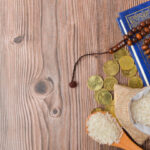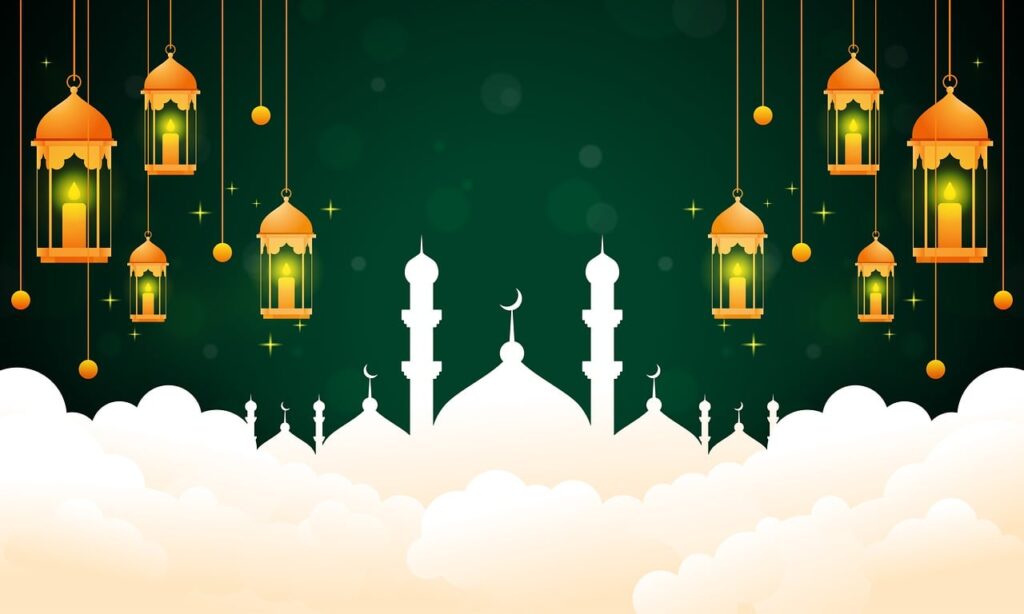Eid is the Arabic word for a feast, festival or celebration and is an important time of the year for Muslims on both occasions they are celebrated. But they are celebrated for different reasons during sacred times of the year. Here we shall look at the differences and similarities of Eid-ul-Fitr and Eid-ul-Adha.
What is the difference between Eid-ul-Fitr and Eid-ul-Adha
Eid-ul-Fitr means festival of breaking the fast, comes the day after the fasting month of Ramadan and marks the completion of a month of devotion and worship. EId-ul-Adha means festival of the sacrifice, commemorating Ibrahim (AS) and his family’s readiness to sacrifice for God and is celebrated within the Hajj pilgrimage that occurs two months after Ramadan.
Another difference is the occasion of the festivals, Eid-ul-Fitr occurs after a month of physical and spiritual exertion has been completed, whereas Eid-ul-Adha comes during the Hajj pilgrimage, with other rituals still to be performed by the pilgrims. However, those not in pilgrimage get to share this part by purchasing an animal to be sacrificed and the meat shared between family, neighbours and the poor.
Although both days are special, Eid-ul-Adha has a higher prominence because it occurs as part of a ritual during some of the holiest days of the Islamic year rather than a celebration as Eid-ul-Fitr is.

How many days between Eid-ul-Fitr and Eid-ul-Adha
Eid-ul-Fitr is the first Eid in the lunar calendar month of Shawwal, then 2 months and 10 days later comes Eid-ul-Adha in the month of Zhul-Hijjah. Depending on the sighting of the moon, the number of days between them doesn’t change much at all.
Similarities between Eid-ul-Fitr and Eid-ul-Adha
The two Eids have many similarities between them including:
- It is mandatory that you do NOT keep a fast on these days
- Both have an extra congregational prayer special for the day which is performed in the morning some time after sunrise, and they are performed slightly differently from regular congregational prayers.
- They have a special call (takbeer) to be recited before the Eid prayers
- Both occasions highlight the importance of charity so that those who cannot afford some little luxuries or even meat are able to have some enjoyment too on these days.
- Both occasions are regarded as times of sharing and caring and a time for family bonds to be strengthened.
- They both have a similar greeting for family, friends and other Muslims that you meet.
Greetings during the two Eids
Eid Mubarak is the most famous greeting for the Eid days. It is translated as ‘Have a blessed day’. Other greetings used in different countries include: ‘Happy Eid’, ‘Bless your holiday’, and ‘May your Eid return again and again’.
Is the word Eid mentioned in the Quran?
Although not referring to the Eid festival as we understand it now, there is a verse in the Quran that mentions this word:
Jesus, son of Mary, prayed, “O Allah, our Lord! Send us from heaven a table spread with food as a feast for us—the first and last of us—and as a sign from You. Provide for us! You are indeed the Best Provider.”
Quran (S. Al Maaidah 5:114)
When isEid-ul-Fitr and Eid-ul-Adha?
Although it depends on the sighting of the moon, they are most likely falling on the following dates:
| Year | Eid-ul-Fitr | Eid-ul-Adha |
| 2021 | 13 May | 20 July |
| 2022 | 3 May | 10 July |
| 2023 | 22 April | 29 June |
| 2024 | 10 April | 17 June |
| 2025 | 31 March | 7 June |



